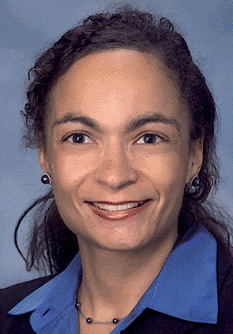PHOENIX-Eosinophilic esophagitis is a serious, growing problem that is little understood by many otolaryngologists, according to panelists discussing the disease. Some doctors who specialize in swallowing disorders acknowledged that they were not even aware of the problem, let alone well versed in diagnosing and treating the illness, according to results of a survey completed by 80 members of the American Broncho-Esophagological Association (ABEA).
Explore This Issue
August 2009The panelists, in an attempt to raise awareness of and educate their fellow doctors about the problem, talked about the disease’s symptoms and treatments at the 88th annual meeting of the ABEA, conducted as part of the Combined Otolaryngology Spring Meeting.
 Many of these symptoms are assumed to be associated with gastroesophageal reflux or laryngopharyngeal reflux. They often get treated for reflux disease, [but] the symptoms are refractory to traditional acid suppression.
Many of these symptoms are assumed to be associated with gastroesophageal reflux or laryngopharyngeal reflux. They often get treated for reflux disease, [but] the symptoms are refractory to traditional acid suppression.
-Dana Thompson, MD
Eosinophilic esophagitis, which occurs in both adults and children, is a disease in which eosinophils penetrate into the esophageal mucosa. In adults, it is associated with difficulty in swallowing; food impaction; chest pain; and stricture formation in the esophagus. In children, symptoms include vomiting and regurgitation, feeding disorders and oral aversion, food impaction and a general failure to thrive.
Many of these symptoms are assumed to be associated with gastroesophageal reflux or laryngopharyngeal reflux, said Dana Thompson, MD, Associate Professor of Otolaryngology at the Mayo Clinic. They often get treated for reflux disease, [but] the symptoms are refractory to traditional acid suppression.
Under the official definition, more than 14 eosinophils must be present per high-power field in an examination of the esophagus, in addition to esophageal symptoms and the exclusion of gastroesophageal reflux disease (GERD). Jeffrey Alexander, MD, Assistant Professor of Medicine in the Division of Gastroenterology at the Mayo Clinic College of Medicine, said it is not a great definition because patients with fewer than 14 eosinophils can have the same clinical syndrome, which may also be present in adult patient with concomitant GERD. I think our knowledge and understanding of this is evolving, Dr. Alexander said.
The disease was first described in 1977; there have been 338 publications about the disease in the English literature, including 240 since 2005. The first airway manifestations were described in 2000 by Orenstein et al. And the first report in otolaryngology literature about eosinophilic esophagitis was published in 2002 by Hartnick, Liu, Cotton and Rudolph (Ann Otol Rhinol Laryngol 2002;111:57).
Leave a Reply